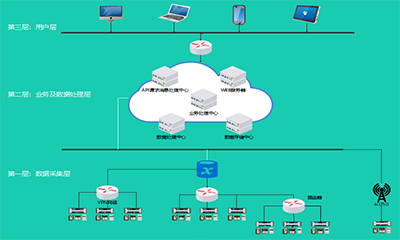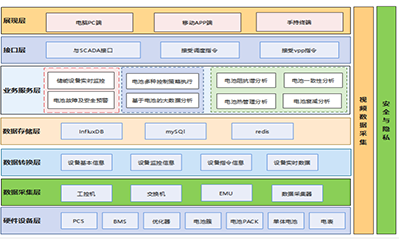Energy Interconnection
Utilizes Internet of Things (IoT) technology with rich interfaces for real-time monitoring of massive data, remote control, and OTA upgrades
Features a cloud-edge architecture enabling station-level deployment and cloud-based management of station clusters
Full Monitoring
Employs digital twin visualization technology for all-round, three-dimensional monitoring without blind spots
Covers multiple equipment types, including battery cells, PCS, fire protection, cooling, and metering, with full access and panoramic display

Advantages Energy interconnection Internet of Things (IOT) technology has rich interfaces, real-time monitoring of massive data, remote control, and OTA upgrades, and the cloud-edge architecture enables station-level deployment and cloud-based management of station clusters Full monitoring Adopting digital twin visualization technology, it provides all-round three-dimensional monitoring without blind spots, covering multiple types of equipment such as battery cells, PCS, fire protection, cooling, metering, etc., with full access and panoramic display Three-dimensional safety Cloud computing and AI technologies are used to achieve active safety management of energy storage cells, abnormal warnings, online diagnosis, and equipment safety. RSA encryption technology is used to ensure data security Smart Operation According to the power market, source-grid-load demand and battery status, the energy storage battery operation strategy is flexibly configured to obtain maximum benefits. Multi-dimensional battery analysis and SOC self-calibration based on big data technology can reduce operation and maintenance costs Advantages Energy Interconnection Utilizes Internet of Things (IoT) technology with rich interfaces for real-time monitoring of massive data, remote control, and OTA upgrades Features a cloud-edge architecture enabling station-level deployment and cloud-based management of station clusters Full Monitoring Employs digital twin visualization technology for all-round, three-dimensional monitoring without blind spots Covers multiple equipment types, including battery cells, PCS, fire protection, cooling, and metering, with full access and panoramic display Three-Dimensional Safety Leverages cloud computing and AI technologies for active safety management of energy storage cells, including abnormal warnings, online diagnosis, and equipment safety Ensures data security through RSA encryption technology Smart Operation Flexibly configures energy storage battery operation strategies based on power market conditions, source-grid-load demand, and battery status to maximize benefits Utilizes multi-dimensional battery analysis and SOC self-calibration powered by big data technology, significantly reducing operation and maintenance costs
Leverages cloud computing and AI technologies for active safety management of energy storage cells, including abnormal warnings, online diagnosis, and equipment safety
Ensures data security through RSA encryption technology
Smart Operation
Flexibly configures energy storage battery operation strategies based on power market conditions, source-grid-load demand, and battery status to maximize benefits
Utilizes multi-dimensional battery analysis and SOC self-calibration powered by big data technology, significantly reducing operation and maintenance costs

